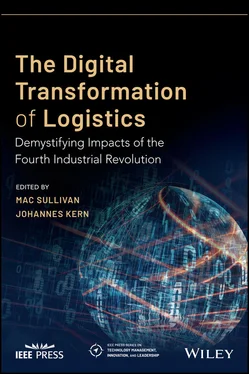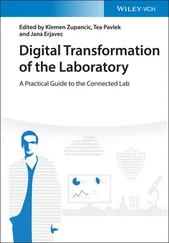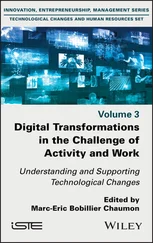Automation has been placed at the forefront of the digitalization trend that is sweeping across the business community. There are several forms of automation, but in this case, we will be evaluating robotic process automation (RPA) as an emerging technology that is garnering substantial attention in the logistics community. According to the Institute for Robotic Process Automation, “Robotic process automation is the application of technology that allows employees in a company to configure computer software or a ‘robot’ to capture and interpret existing applications for processing a transaction, manipulating data, triggering responses and communicating with other digital systems” (Institute for Robotic Process Automation 2020). Research into the application of RPA shows that this technology is enabling automation in areas that had in the past shown too expensive to do so (Barnett 2015). The cost of virtual RPA robot worker is between 10 and 19% of a local full‐time employee (FTE) and roughly 33 and 50% of an FTE in an outsourced location (Prangnell and Wright 2015; Slaby 2012; Willcocks et al. 2015). Considering such price points, it seems that there is a potential for substantial savings over the way companies are currently operating. Therefore, in this chapter, we will investigate the use case of automating white‐collar documentation work using RPA.
To address the subject of RPA, an explanation of what the technology is and how it fits into the context of an international logistics company is initially needed. A logistics company typically has large departments of clerks who are creating documents like bills of lading or invoices. These documents are often created by directly copying parsed information from documents received from clients and pasted into new templates. By mimicking the actions of these clerks, it is feasible that a properly trained automated technology could take over this task. Specifically, an RPA bot works in the presentation layer of a system and acts like a human using the same inputs that a mouse and keyboard would by clicking and typing (Slaby 2012). An RPA bot does not necessarily live within a source system or software like Microsoft Word or SAP's enterprise resource planning (ERP); it lives on top of infrastructure like a Windows desktop (Aguirre and Rodriguez 2017). This allows the bot to cross multiple software and reduces the need for integrations and the risk of disrupting system logic. By not living in the source code or database, RPA bots are much more like a human worker and do not require the user to have a lot of coding skills as opposed to traditional system‐to‐system automation (Asatiani and Penttinen 2016; Slaby 2012).
Evaluating Heavyweight IT to Lightweight IT Automation
When evaluating any project, it is important to figure out which resources you have and which resources make the most sense to invest in for your future. The role of IT departments within logistics companies is going through a fundamental shift as codeless and plug‐and‐play software‐as‐a‐service (SaaS) solutions and technologies become more prevalent in the workplace. The idea of heavyweight IT, which is defined as a knowledge domain driven by IT professionals, who used digital technology, and made possible by software engineering, is giving way to lightweight IT, which is a socio‐technical knowledge domain that is enabled by solution‐driven user demand, mass adoption of digital technology, and innovative processes (Bygstad 2016). Traditional IT experts tend to gravitate back to heavyweight IT back‐end system integration using electronic data interchange (EDI) or application programming interface (API) integrations, whereas lightweight IT looks to graphical user interface (GUI) automation like API (Bygstad 2016; Lacity and Willcocks 2016). Heavyweight IT automation is reliant on little variation in systems architecture, while lightweight IT automation is more reliant on interfaces having little change (Penttinen et al. 2018). If looking to enable non‐IT professionals to be able to automate more processes, lightweight IT automation like RPA is worth exploring (Bygstad 2016). Regardless of where your organization is today, it is important to audit your internal capabilities in terms of skills and perhaps more important to think about where customer demand is going to take you with respect to the talent needed to provide that.
Achieving Operational Excellence
Process Improvement on the Rise
Information technology offers businesses a few different paths for improving their processes through automation (Penttinen et al. 2018). The classic business strategy dilemma is to either be led by external forces such as customers who push requests and demand from the “outside” and affect those processes “in” an organization. This is called the outside‐in approach. The alternative is to enhance “inside” capabilities and resources to be more efficient. Over the past several decades, we have seen the growth and decline of straight‐through processing (STP) (van der Aalst and van Hee 2002; ter Hofstede et al. 2010) as a type of workflow management (WFM) that evolved into business process management (BPM). BPM can be explained as process automation or used to refer to the daily exaction of processes managed through software (van der Aalst 2014; Harmon 2010). BPM became expensive as it took the outside‐in approach where new systems had to be developed from scratch and extensive integration with outside systems was needed (van der Aalst et al. 2018). Modern trends point toward a need for an increased amount of connectivity, which leads us to believe that BPM and heavyweight IT are going to continue to increase in cost and complexity (Sommerville et al. 2010). BPM use cases have been unclear and sparse through the past decade (Le Clair 2017), and RPA presents an opportunity to enable the “outside‐in” strategy where the core legacy systems can remain and the human labor is augmented or replaced by “virtual agents” (van der Aalst et al. 2018).
It is important to note that BPM can be interpreted dramatically different between companies; however, in general, it is referring to the strategy of a cross‐functional attempt to increase productivity through systematic governance and management of processes. BPM does not look at isolated processes in a vacuum but ideally takes a more holistic strategic look from an organization level to highlight, reengineer, and ideally automate processes and services (Jeston 2014). There are plenty of companies where the BPM team has the bandwidth and internal power to be able to implement an RPA solution.
Outsourcing Versus Automation
Improving operational excellence to drive down internal costs takes a concerted effort and has typically fallen behind increasing revenue in the logistics industry. Attempting to lower costs through tightening operational expenses by looking to leverage technology to promote efficiency is nothing new and there is a lot of room for improvement left as many companies still have inefficient processes (Penttinen et al. 2018). Since the First Industrial Revolution, companies have been streamlining processes and segmenting work. However, the definition of work itself is changing as it did during that period of time when workers moved from the farm to the factory. The role and creation of a logistics service provider is an area where manufacturers and trading companies have been increasingly outsourcing their logistics department since the 1990s (Sohail and Sohal 2003). The obvious value that an automated solution would offer is that robots are not affected by the mental, physical, and environmental constraints of a human worker (Adams 2002). Robots are a sustainable solution if properly funded and implemented.
Funding is an area in which automation has been falling short in the past as many companies did not have the scale to outlay large capital expenditures and later recoup this investment. Things may be changing though as the cost to automate is consistently decreasing and technologies like RPA are becoming more available. A 2016 research report by Deloitte states that the cost of running a bot was most often cheaper than offshoring (Frank 2015). Slaby (2012) echoes this sentiment stating that RPA is a threat to BPO companies who have a singular value proposition of providing a lower cost labor force. If this statement holds up, there would be much higher utilization of RPA bots to perform tasks that are currently executed by numerous human labor in outsourcing locations. Defining processes and creating the proper documentation to hand over a task are very similar whether dealing with a human or a bot. Whoever will be doing the task in a new scenario, there is a need to create extensive contingency plans that requires a large amount of time to ensure that all scenarios have been carefully thought out. This is where tasks that have very little variability are preferred in outsourcing or automating as the number of scenarios would be less. Once again, the decision to step back from the daily activities of troubleshooting and temporarily putting stakeholder demands aside to dedicate resources to process mapping becomes a formidable challenge for logistics executives to address.
Читать дальше












